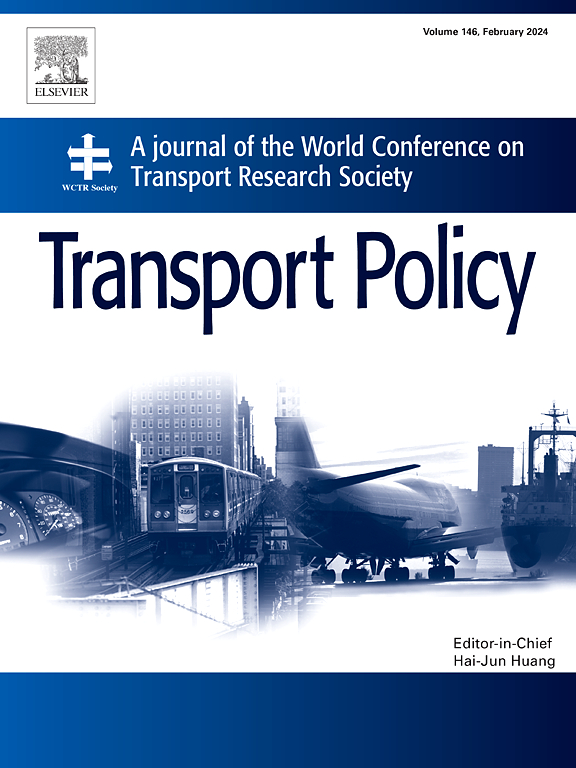是什么导致了低排放区对就业可得性影响的不平等?
IF 6.3
2区 工程技术
Q1 ECONOMICS
引用次数: 0
摘要
低排放区(LEZs)旨在改善城市空气质量和减少排放,但由于其对可达性的倒退影响,常常遭到公众的反对。然而,人们对造成这些倒退影响的原因仍然知之甚少。本研究调查了法国八个城市的低排放区对不同职业类别的就业可得性的不平等影响因素。通过使用事前公开数据,本研究计算了每个职业类别由于低排放区造成的预期就业可得性损失。此外,该研究还对低排放区的影响在以下六个驱动因素之间的差异进行了反事实分解:污染车辆的拥有率、低排放区内工人的住所和工作场所、工人住所和工作场所通过公共交通的可达性,以及在住所和工作场所之间通勤的主动交通模式的可行性。研究结果表明,在所考察的八个城市中,有六个城市的低排放区主要是递减的。尽管低排放区内的高收入工人和工作岗位较为集中,导致该群体在交通便利性方面遭受重大损失,但低收入工人由于其住所和工作场所附近的公共交通有限、通勤时间较长以及污染车辆比例较高而承受了更大的负担。这些发现有助于为解决低排放区倒退效应的潜在补充政策提供信息。本文章由计算机程序翻译,如有差异,请以英文原文为准。
What drives inequalities in Low Emission Zones’ impacts on job accessibility?
Low-emission zones (LEZs) aim to improve urban air quality and reduce emissions but often face public opposition due to their regressive impacts on accessibility. However, the causes of these regressive impacts remain poorly understood. This study investigates the factors driving inequalities in the impacts of LEZs on job accessibility across occupational categories in eight French cities. Using ex-ante open-source data, it computes expected job accessibility losses due to LEZs per occupational category. Additionally, it provides a counterfactual decomposition of the disparities in LEZs’ impacts between six drivers: ownership of polluting vehicles, workers’ residences and workplaces within the LEZ, accessibility of workers’ homes and workplaces via public transportation, and feasibility of active transportation modes for commuting between homes and workplaces. The findings reveal that LEZs are predominantly regressive in six out of the eight cities examined. Despite a higher concentration of high-income workers and jobs within LEZs, resulting in significant accessibility losses for this group, low-income workers bear a greater burden due to the limited availability of public transportation near their residences and workplaces, longer commutes to work, and higher shares of polluting vehicles. These findings help inform potential complementary policies to address the regressive effects of LEZs.
求助全文
通过发布文献求助,成功后即可免费获取论文全文。
去求助
来源期刊

Transport Policy
Multiple-
CiteScore
12.10
自引率
10.30%
发文量
282
期刊介绍:
Transport Policy is an international journal aimed at bridging the gap between theory and practice in transport. Its subject areas reflect the concerns of policymakers in government, industry, voluntary organisations and the public at large, providing independent, original and rigorous analysis to understand how policy decisions have been taken, monitor their effects, and suggest how they may be improved. The journal treats the transport sector comprehensively, and in the context of other sectors including energy, housing, industry and planning. All modes are covered: land, sea and air; road and rail; public and private; motorised and non-motorised; passenger and freight.
 求助内容:
求助内容: 应助结果提醒方式:
应助结果提醒方式:


